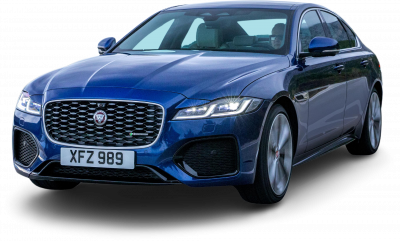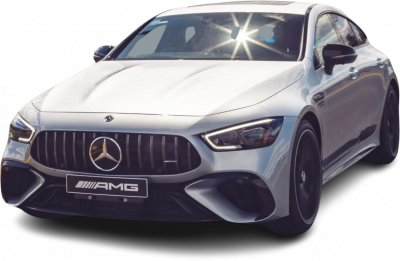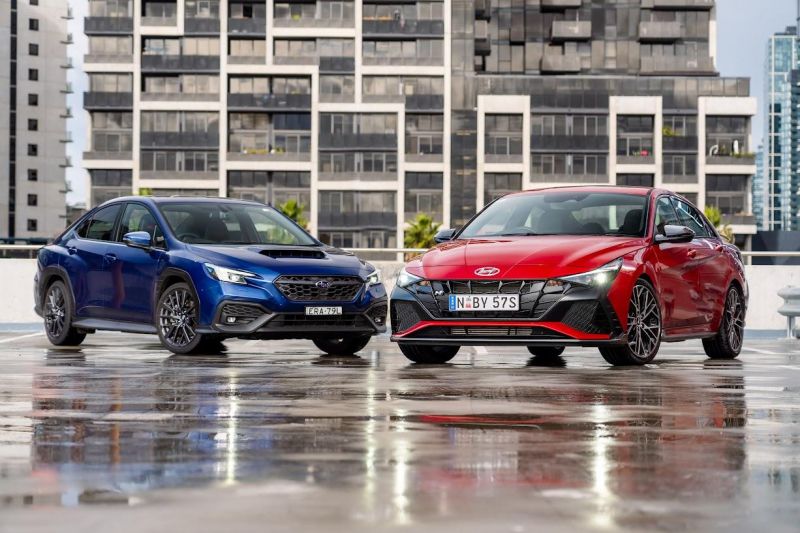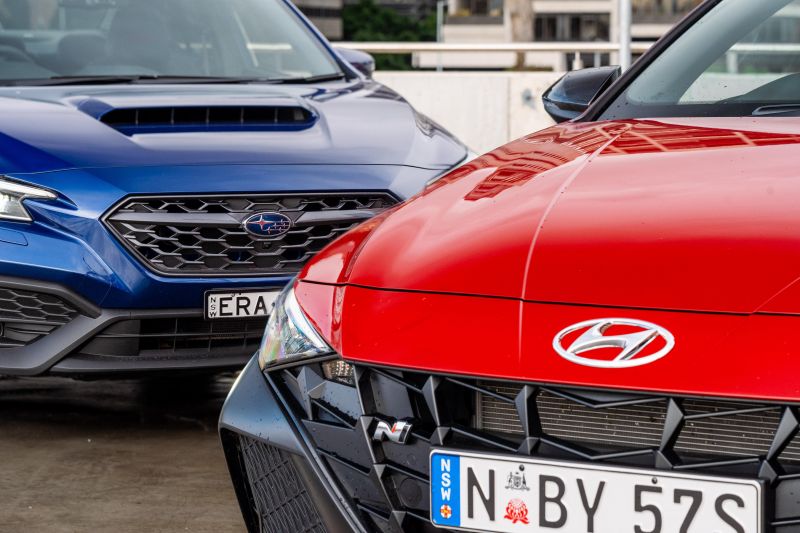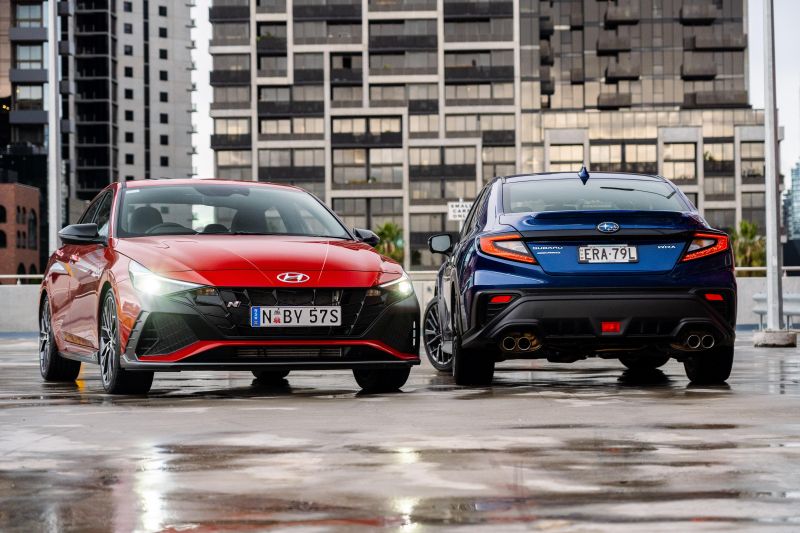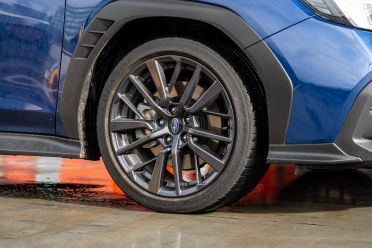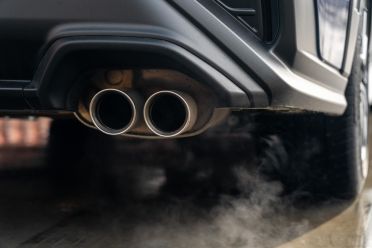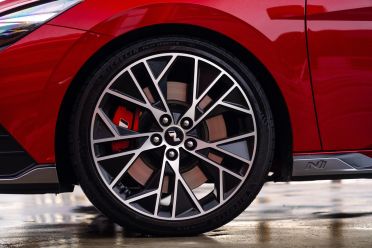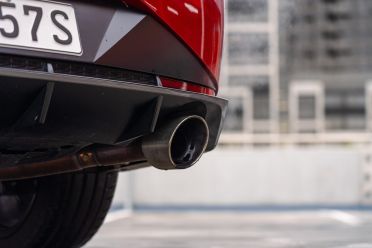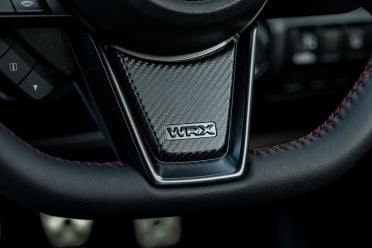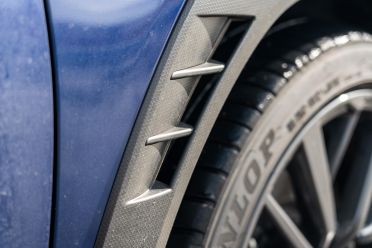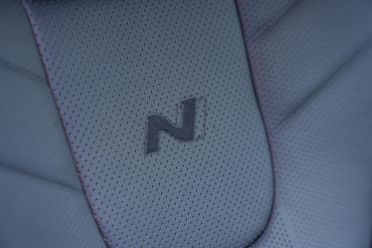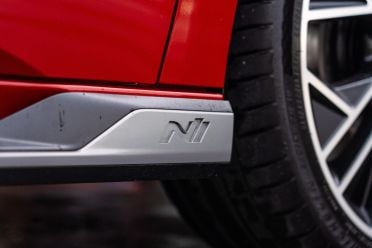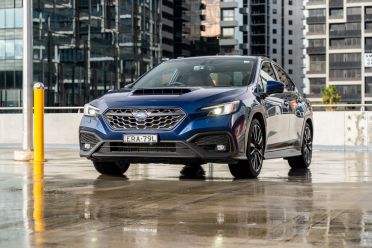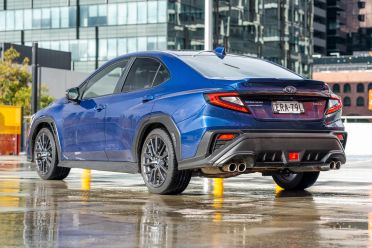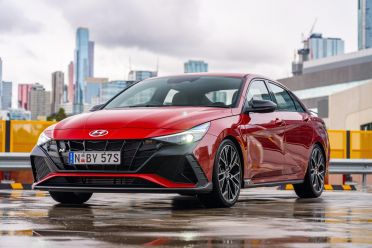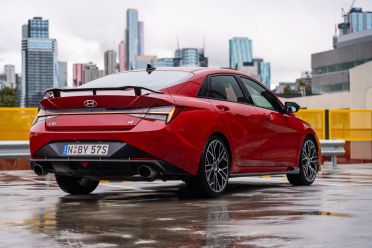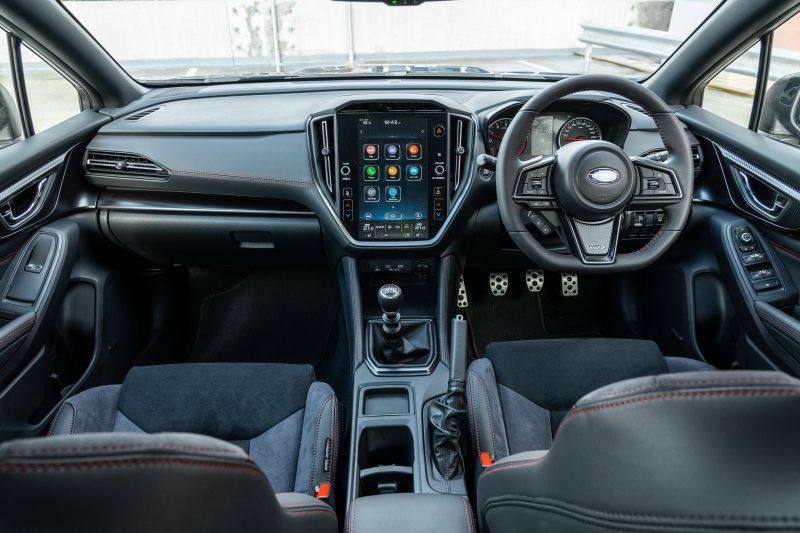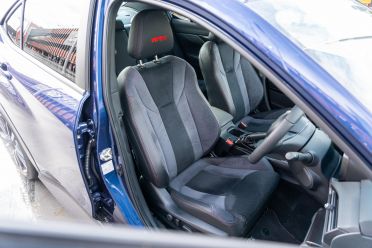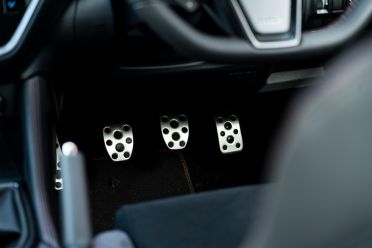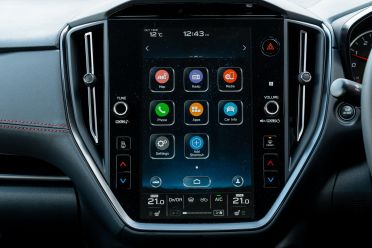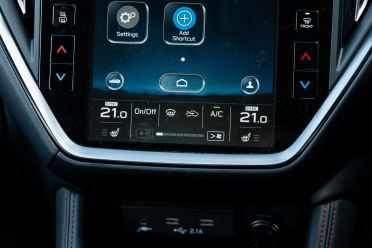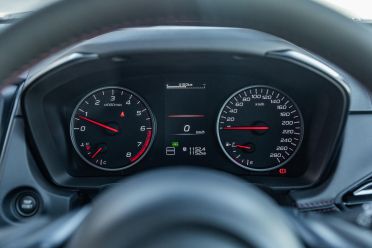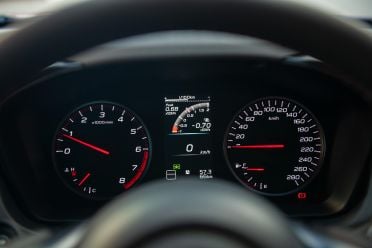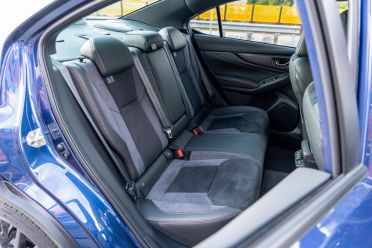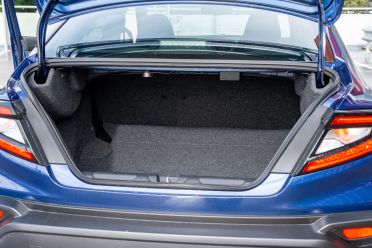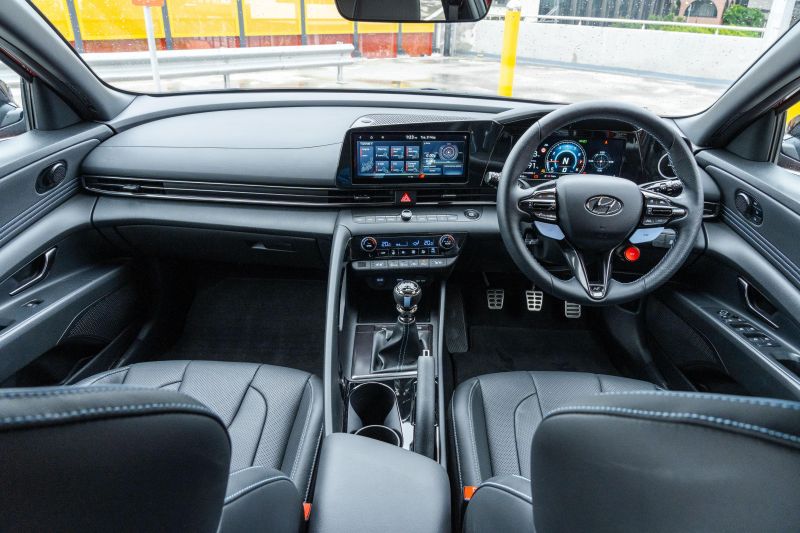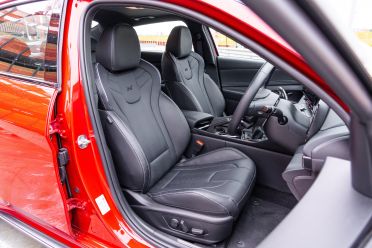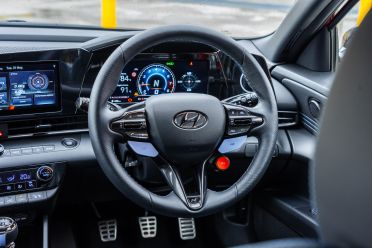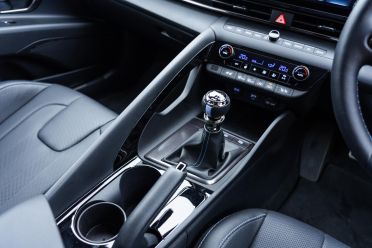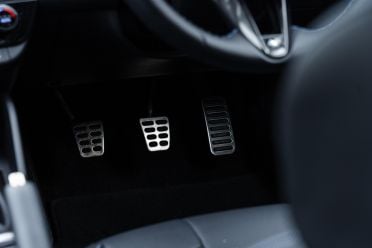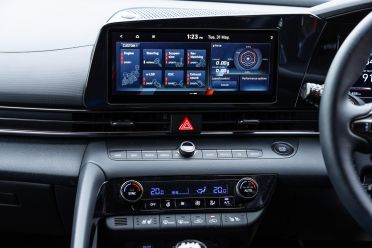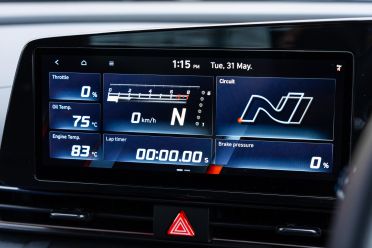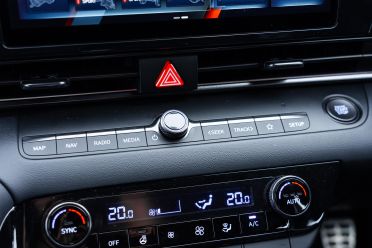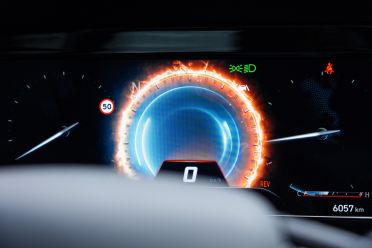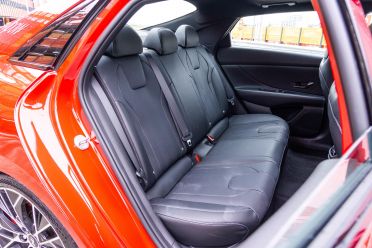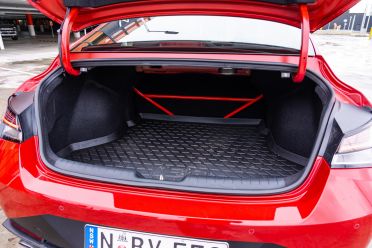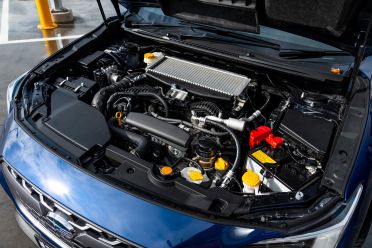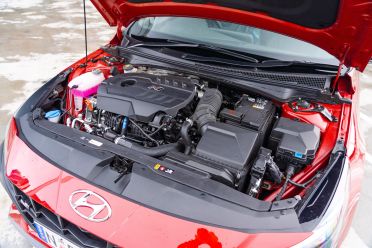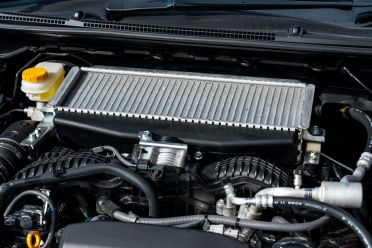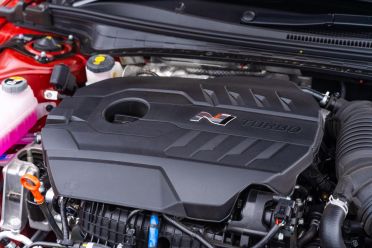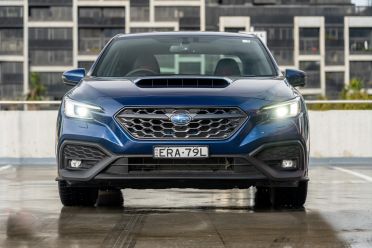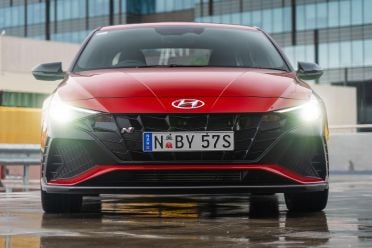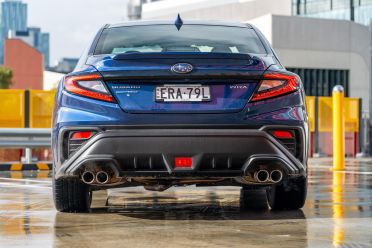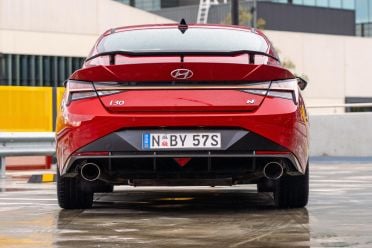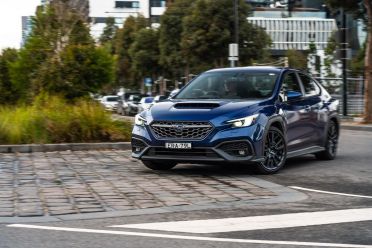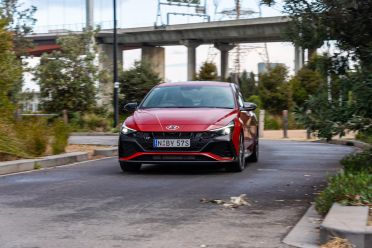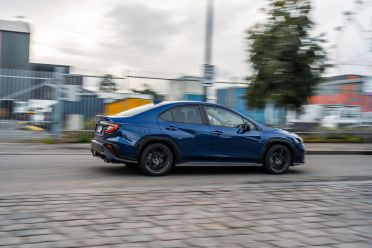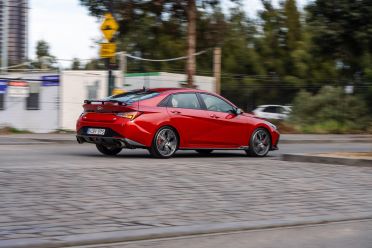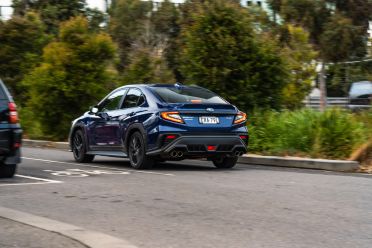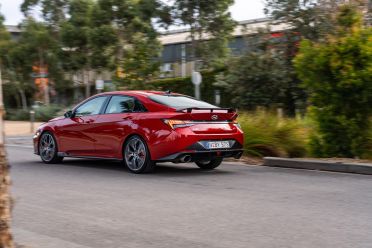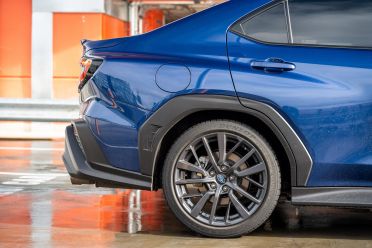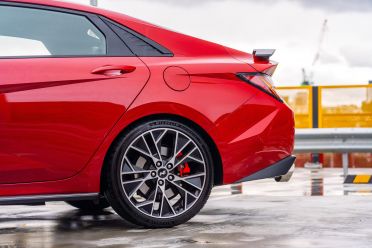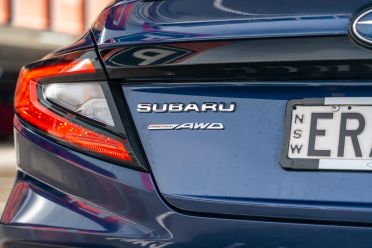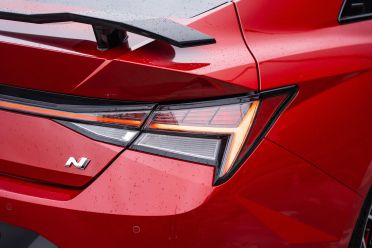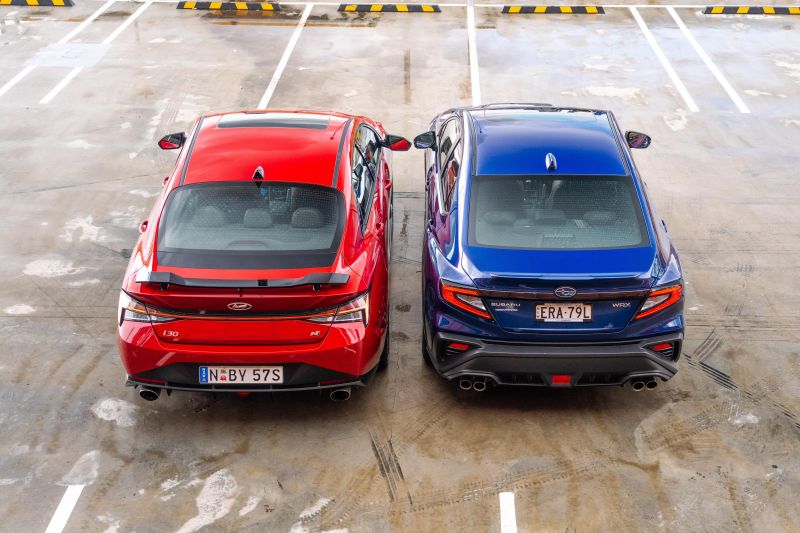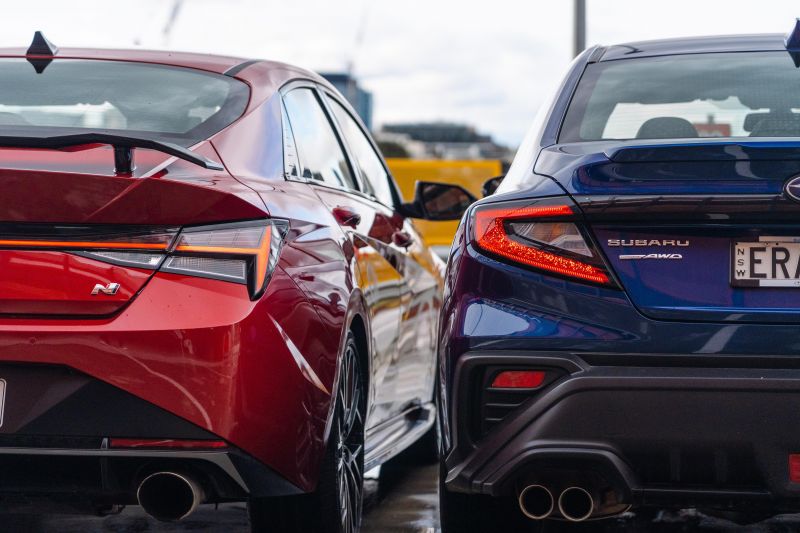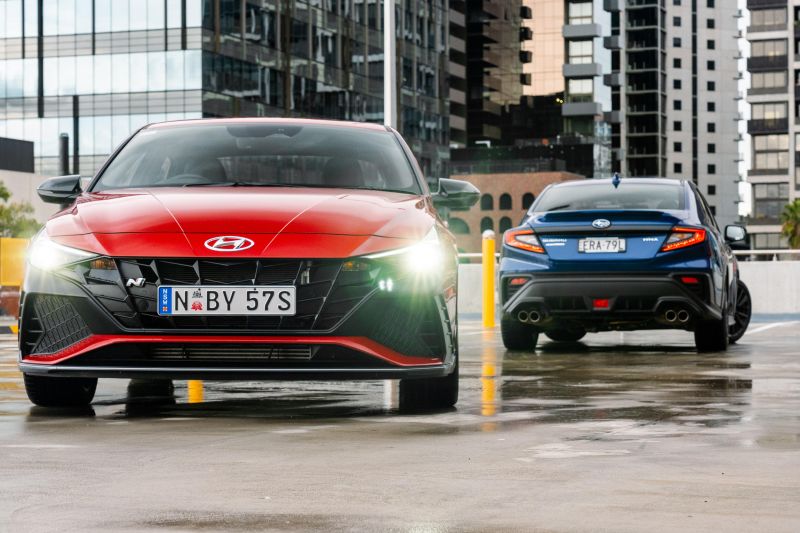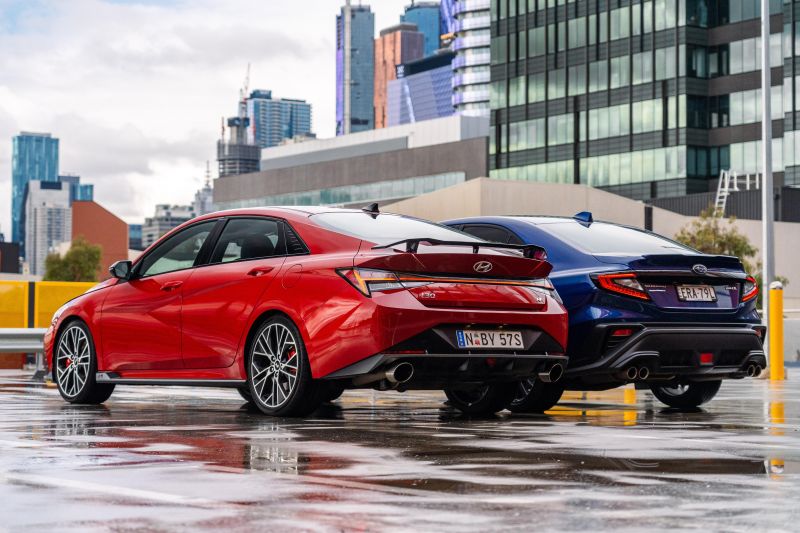You’re looking at a curious study in evolution.
The Subaru WRX has been around since 1994. When it launched, it featured all-wheel drive and a turbocharged boxer engine making 155kW of power, a recipe it has followed religiously since.
In the intervening 26 years its power output has grown to 202kW, and the tinge of yobbishness that’s characterised the WRX has been gradually dialled back. The current-generation model is the most grown-up Rex yet.
The Hyundai i30 Sedan N doesn’t have anything like the pedigree of the WRX.
Hyundai’s sportiest car in 1994 was the S Coupe turbo, a front-wheel drive two-door with just 85kW from its 1.5-litre engine. The i30 didn’t even exist until 2007, at which stage the WRX was pumping out 195kW from its turbocharged boxer.
Don’t let history fool you though, in 2022 the i30 and WRX are close to a perfect match.
The WRX stays true to its roots with a turbocharged 2.4-litre boxer engine, all-wheel drive, and rally-inspired looks. It still has a big bonnet scoop, and it still looks… distinctive.
The Hyundai has a smaller-displacement engine, and features front-drive with a tricky differential instead of all-wheel drive, but it makes near-identical amounts of power and torque to the Subaru. It’s almost the same size, almost the same price, and as specified here features an enthusiast-baiting manual transmission like the WRX.
Does Subaru’s experience pay off, or has the young upstart stolen its thunder?
How much?
The Subaru WRX range kicks off at $44,990 before on-road costs for the AWD manual, but the RS AWD manual on test here is priced at $50,490 before on-roads.
According to the Subaru Australia website, that aligns with a drive-away price around the $55,000 mark.
The Hyundai i30 Sedan N is available in one trim, with a choice between manual and dual-clutch transmissions for $49,000 before on-road costs. Opting for a sunroof adds $2000 to the sticker price.
Without a sunroof, that equates to a drive-away price of $53,500.
What do you get?
Standard equipment on both models includes:
- Android Auto and Apple CarPlay
- DAB+ digital radio
- Satellite navigation
- Rain-sensing wipers
- Keyless entry and start
- Front and rear parking sensors
- Power-folding exterior mirrors
- Heated front seats
- Dual-zone climate control
- Leather-wrapped steering wheel
- Tyre pressure monitoring
- Sunroof (standard in WRX, optional in i30 N)
Equipment unique to the WRX RS includes:
- 18-inch alloy wheels
- Automatic LED Steering Responsive Headlights
- Leather and suede seats
- 11.6-inch touchscreen infotainment system
- 10-speaker sound system
- Heated rear outboard seats
- Eight-way power passenger seat
- LED puddle lights
- Dual rear USB charge ports
Equipment unique to the i30 Sedan N includes:
- 19-inch alloy wheels
- Leather seats
- Ventilated front seats
- 10.25-inch touchscreen infotainment system
- Eight-speaker Bose sound system
- Wireless phone charger
- Active variable exhaust
- Adaptive electronic dampers
- Rear stiffness bar
Are they safe?
Neither car has a crash rating from Euro NCAP or ANCAP.
The i30 Sedan isn’t sold in Europe, and is therefore unlikely to be rated. Subaru doesn’t sell the WRX in Europe either, which means it may suffer the same fate.
Of the two cars, the i30 packs comfortably more safety equipment. Although Subaru offers a full range of driver assists on the WRX CVT, the manual misses out on most of them… despite Hyundai (among other rivals) managing to offer their three-pedal sports car with a full suite of assists.
Both cars have eight airbags. Other safety features common to both include:
- Blind-spot monitoring
- Rear cross-traffic alert (safety chime, no intervention)
- Driver attention monitoring (camera-based in WRX)
The WRX has no unique safety features alongside the Hyundai.
Equipment unique to the i30 Sedan N includes:
- Forward AEB with pedestrian detection
- Lane-keep assist
- Rear cross-traffic assist (automatic braking after alert)
- Lane Following Assist
- Safe exit warning
What are they like inside?
Subaru WRX
The WRX hasn’t been known for offering high-tech or particularly tactile interiors throughout its life, but the 2022 car breaks with tradition by offering a comfortable, modern cabin.
The big screen and basic dashboard design lean heavily on parts that’ll be familiar from elsewhere in the Subaru range, but the chunky steering wheel and seats mean the WRX still feels sporty.
The driving position is good in the RS, with space for taller drivers. Subaru has done a nice job balancing of bolstering and long-haul comfort, given this is meant to be a more grown-up take on the WRX formula, although the seat doesn’t drop as low as the racier-looking units in the Hyundai.
WRX emblems and red stitching are on hand to lift the ambience, and you’re able to get a boost gauge atop the trip computer in place of the fuel economy readout that usually sits there.
Subaru’s chunky flat-bottomed wheel feels good in your hands, and most of the things you need to poke and prod fall easily to hand. The wheel in the i30 N, with its drive mode paddles and prominent REV button, is more special though.
The vertically-oriented touchscreen takes care of your climate and media, and has swallowed the trip computer Subaru has traditionally situated atop the dashboard.
With sharp graphics and smooth responses, it manages to make moving away from buttons relatively painless. There are prominent shortcuts for commonly-used functions like fan speed, and the physical controls for the volume and temperature are a welcome touch.
The inbuilt navigation supplied by TomTom has live traffic updates, and is handy if you’re touring in areas with no mobile reception, but Google or Apple Maps are always preferable.
Like Hyundai, Subaru doesn’t do wireless CarPlay. Unfortunately, Subaru doesn’t do wireless phone chargers either.
The graphics and animations on the Subaru system look a bit simple alongside the flashier system in the Hyundai, but it’s the easier of the two to use on the move. With big icons, colourful graphics, and a screen that’s within easy reach, it won’t have you diving deep into the owner’s manual.
With analogue dials and a fairly basic colour trip computer sitting between them, the WRX can’t come close to matching the higher-tech Hyundai on the driver’s display front.
The manual features an old-fashioned handbrake in place of the automatic’s electric unit, but still has big cupholders and a broad space beneath the dashboard. The cupholders are set in a better position to keep drink bottles out of the driver’s way when they’re shifting than the cupholders in i30, but the underarm storage bin is tiny because it’s home to a DVD slot.
Rear seat space is good. Despite its reasonably compact proportions (check out our table below), legroom back there is generous enough to seat average-sized adults behind average-sized adults.
Headroom is compromised slightly, but six-footers will be able to get comfortable back there without ruining their hair. A fold-down central armrest is standard, but air vents are only included on CVT models.
A trio of top-tether child seat anchors is joined by two ISOFIX points. Claimed boot space is 411 litres in the RS and tS.
Hyundai i30 N
The i30 N feels more modern and exciting than the WRX at first glance. You sit lower, ensconced between the high transmission tunnel and rising windowline, and the passenger grab handle that divides the cabin contributes to a driver-oriented feeling.
With slightly more bolstering around the thigh region, the seats in the i30 N are marginally better than those in the WRX, although the pedals in the Subaru are better placed for rev-matching.
It’s worth noting some of the materials in the Hyundai feel a bit cheap and nasty, despite looking sharper. The grab handle in particular is hard to the touch, and squeaks when you press your knee against it in hard cornering.
Some of the ergonomics are a bit iffy, too. The gear knob itself is a quality item, but a normal drink bottle sat in the cupholder gets in the way of my forearm when shifting, and the skinny door pockets don’t have space.
Hyundai’s chubby, padded steering wheel is more special than the unit in the Subaru. Not only does it feel better in your hands, it features two programmable mode buttons and a bright red button for the auto rev-match. Both look cool, and are genuinely useful ways to unwrap the layers of customisation on offer.
The widescreen touchscreen in the Hyundai looks more polished than the Subaru’s vertical unit, with cleaner graphics and smoother animations. It’s the pick of the pair on the technology front, an advantage reinforced by the driver display.
In N mode, it gives you a prominent central rev counter and gear display, along with key performance information like your oil temperature and tyre pressures. The Subaru can’t come close to matching it for cool factor, nor for the amount of information it can show.
Speaking of N Mode, the range of graphics on offer in the touchscreen is so much more impressive in the i30 than the WRX. Gear position, throttle position, g-forces; all of them can be tracked live through the touchscreen using graphics that wouldn’t look out of place in Gran Turismo. It’s so much more advanced than what Subaru offers.
The i30 N has a more usable underarm storage bin, and its wireless phone charger is a handy inclusion. It also has more USB ports up front.
Rear seat space in the i30 N is similar to that of the WRX, but the Subaru is marginally more accomodating for tall passengers due to its slightly boxier roofline. The longer wheelbase on the Hyundai plays out in more legroom, but for the most part it’s line-ball back there.
It’s worth noting the i30 doesn’t feature a fold-down central armrest, where the WRX does.
A trio of top-tether child seat anchors is joined by two ISOFIX points. Claimed boot space is 464L, and the boot opening itself is slightly broader than that of the WRX.
| Subaru | Hyundai | |
|---|---|---|
| Length | 4670mm | 4675mm |
| Width | 1825mm | 1825mm |
| Height | 1465mm | 1415mm |
| Wheelbase | 2675mm | 2720mm |
| Boot space | 411L | 464L |
| Weight (tare) | 1516kg | 1440kg |
What’s under the bonnet?
Subaru WRX
Power for the 2022 WRX range comes from 2.4-litre turbocharged four cylinder producing 202kW, up 5kW on the old WRX.
Peak torque remains unchanged at 350Nm, but it comes on song between 2000 and 5200rpm, which means it’s available 400rpm earlier and hangs around 200rpm longer.
Although a CVT is optional, our tester featured a six-speed manual transmission. That means you get a fixed torque split (50 per cent on each axle) between the axles from the all-wheel drive system, rather than the variable split on offer in the CVT.
Claimed fuel economy is 9.9 litres per 100km on the combined cycle, and you’ll need to stump for 95 RON unleaded to fill the 63L fuel tank.
We saw 10.1L/100km on a loop from Melbourne to Healesville and back, with some spirited driving thrown in for good measure.
Hyundai i30 Sedan N
The i30 Sedan N is powered by a 2.0-litre turbocharged four-cylinder engine making 206kW and 393Nm.
Peak torque is available between 2100 and 4700rpm, which means the i30 Sedan N has a narrower torque band the WRX.
An eight-speed dual-clutch transmission is a no-cost option, but our tester was fitted with a six-speed manual.
Unlike the all-wheel drive Subaru, the Hyundai is front-wheel drive. Rather than relying on the rear axle for traction, the i30 features an adaptive electro-mechanical front differential capable of adjusting how it locks based on drive mode.
Claimed fuel use is 8.2 litres per 100km, and you’ll need to fill the 47L fuel tank with 95 RON unleaded.
We saw 9.1L/100km on a loop from Melbourne to Healesville and back, with some spirited driving thrown in for good measure.
| Subaru | Hyundai | |
|---|---|---|
| Engine | 2.4L turbo four-cyl | 2.0L turbo four-cyl |
| Fuel | 9.9L/100km | 8.2L/100km |
| Power | 202kW (5600rpm) | 206kW (6000rpm) |
| Torque | 350Nm (2000 – 5100rpm) | 393Nm (2100 – 4700rpm) |
| Transmission | Six-speed manual | Six-speed manual |
| Drive type | AWD (50/50 split) | FWD |
How do they drive?
For all their similarities, the i30 Sedan N and WRX take distinctly different approaches to putting a smile on the driver’s face.
In mid-range RS manual guise, the Subaru is a set-and-forget performance car. You hop in, press the start button, and drive it, and there’s no way to fiddle with the way the suspension, steering, or powertrain feels.
Thankfully, Subaru has done a good job setting the WRX up. For starters, it’s an easy car to drive daily, with a fat torque curve and intuitive clutch combining to make it simple to pilot in heavy traffic. First and second are short – first runs to 40km/h, and second tops out at 86km/h – so it’s never short of punch at city speeds.
It’s way too quiet though. The engine fires quickly and settles into a typically frenetic, Subaru idle, but from there it fades into the background and never really makes its presence felt again. In isolation it’s disappointing some of that old-fashioned WRX charm is gone; alongside the bombastic Hyundai the muted boxer engine just makes the Rex feel boring.
Boring is never something you could call the i30 N. Even in quiet mode it fires with a flourish and settles into a bassy idle, and dipping into the throttle’s travel instantly has it gargling and grumbling through exhaust pipes big enough to house a Ninja Turtle. It’s constantly talking to you, unlike the mute Subaru.
With longer gearing and a lighter, slightly more awkward clutch action, the i30 requires more concentration to drive smoothly at low speed, but you’d still happily drive it every day. Who needs a DCT?
In the most relaxed of its three damper modes, the Hyundai is the more comfortable car of the pair. It better isolates occupants from smaller imperfections than the Subaru, which feels slightly choppy over tightly-packed bumps, and breathes better with the road over highway crests and dips.
You do get a bit more road roar from the i30 N on average country roads than the WRX, but there’s not much in it.
Although the Subaru strikes a good balance between compliance and body control, the Hyundai manages to be more compliant in Comfort mode, and more tightly tied-down in Sport Plus.
The best part of the Hyundai’s package is that you can pick and choose how angry you want it to be. On a track, for example, you can crank everything up to 11, but on a bumpy b-road you’re able to enjoy the engine and transmission ramped all the way up, but the suspension softened to stop you being deflected by mid-corner bumps.
Set up as such, the i30 N is a more engaging and enjoyable car to drive fast than its Japanese rival.
The WRX is fast, and the traction from its all-wheel drive system is immense in poor weather, but it feels a bit wooly after the Hyundai, particularly on corner entry. The lighter, vaguer steering doesn’t inspire confidence in the same way as its rivals’ setup, and once you’re turned in it’s hard to know what the front end is doing.
The i30 N is sharper by comparison. It’s keener to turn in, and it doesn’t force the driver to constantly adjust their inputs through the middle of a corner. In the WRX you’re constantly adding a bit of lock or taking it away to try and work out what’s required, in the i30 N you have a better idea what’s going on.
Where the Subaru has a significant advantage is when it comes to traction, especially in wintry Melbourne. The locking differential on the i30’s front axle is seriously impressive, determinedly dragging the car out of corners in its most aggressive mode, but it’s not capable of working miracles.
In the wet, the burying the accelerator in second gear will have the i30 N axle-tramping its way up the road, where the WRX puts all of its torque down, all the time.
Speaking of torque, the 2.4-litre engine in the Subaru is a more effortless performer than the 2.0-litre in the Hyundai. Although it’s actually 43Nm down on paper, the fact it comes on song earlier (and the short gearing) means the WRX comes on song sooner on the way out of second- and third-gear corners, and feels more determined through the mid-range.
It’s deceptively quick, and if you’re not careful will bash hard into its 6000rpm redline on the way out of second-gear corners. A few more revs to play with would be nice – the engine clearly has more to give, and it feels as though you need to shift just as you’re getting your eyes up and letting the WRX loose on corner exit.
Subaru isn’t known for making the world’s best transmissions, but the six-speed manual in the WRX is an improvement on its predecessor… it’s just not as nice as the slicker, more positive six-speeder in the i30 N.
Although keen drivers will want to heel-and-toe themselves, the fact the i30 N will do it for you flattens the learning curve associated with driving a three-pedal car fast, too.
Cost of ownership
Subaru WRX
All WRX models are backed by a five-year, unlimited-kilometre warranty – but there’s no provision in the warranty for track driving. Owners keen to push their cars to the limit off the public road beware.
Maintenance is required every 12 months or 15,000km.
The first five services cost $2433.06 in the manual using Subaru’s capped-price service schedule.
Hyundai i30 Sedan N
Hyundai backs the i30 Sedan N with a five-year, unlimited-kilometre warranty that covers track driving.
Maintenance is required every 12 months or 10,000km, and the first five services will each set you back $335 for a combined cost of $1675.
CarExpert’s Pick
The WRX represents a step forward from its predecessor, but it can’t match the Hyundai’s impressive breadth of capabilities.
Although the one-time rally all-star is a more talented all-rounder than ever, it feels slightly compromised because of it. With its clever drive mode selection system, the Hyundai isn’t hampered by those same compromises.
Not only is it a nicer car to live with day-to-day, with a more comfortable ride and more refined interior with the suspension dialled right back, the i30 N possesses a sharper edge when the red mist descends.
For all its strengths, chief among which are its impressive all-wheel drive traction and torque-rich engine, the WRX lacks the same ability to switch from Dr Jekyll to Mr Hyde, and instead feels stuck somewhere between the two.
With an exhaust, and the adaptive dampers fitted to the range-topping WRX tS this comparison might have ended differently, but as it sits right now the WRX is just a bit one-dimensional alongside the upstart i30 Sedan N.
MORE: Everything Subaru WRX
MORE: Everything Hyundai i30




